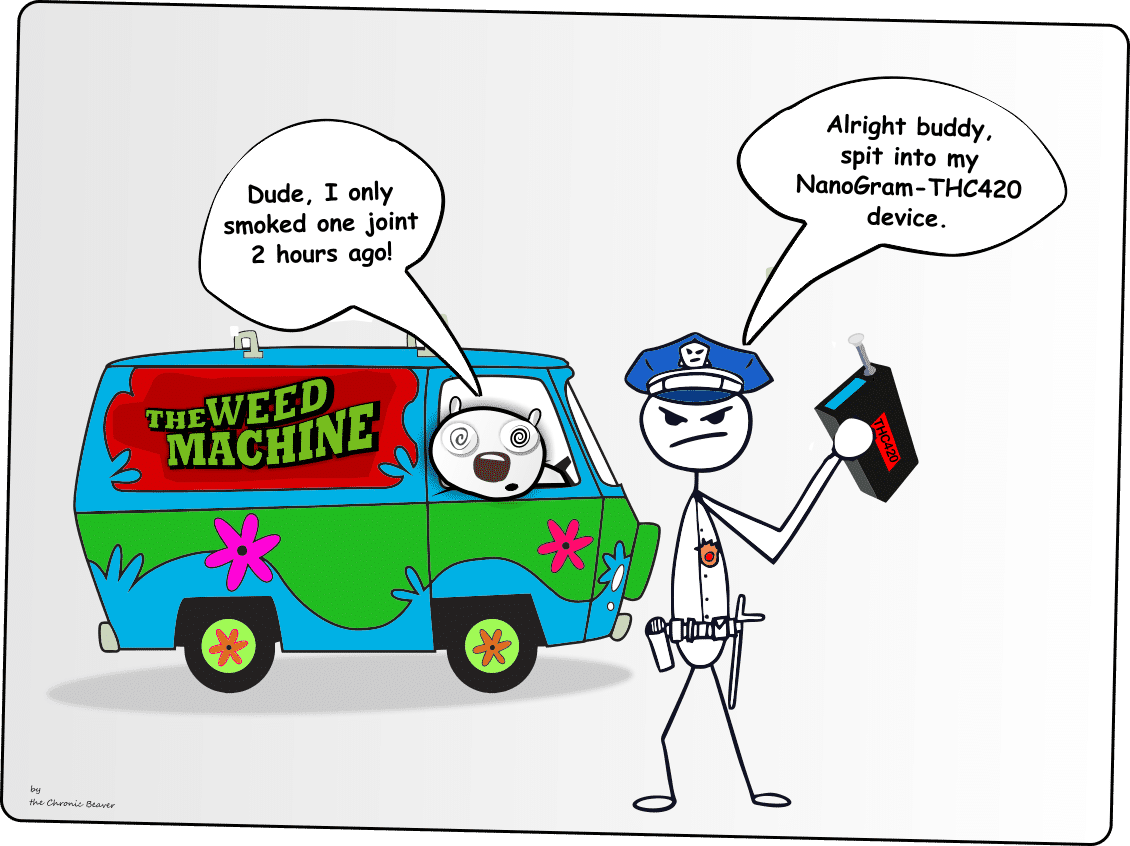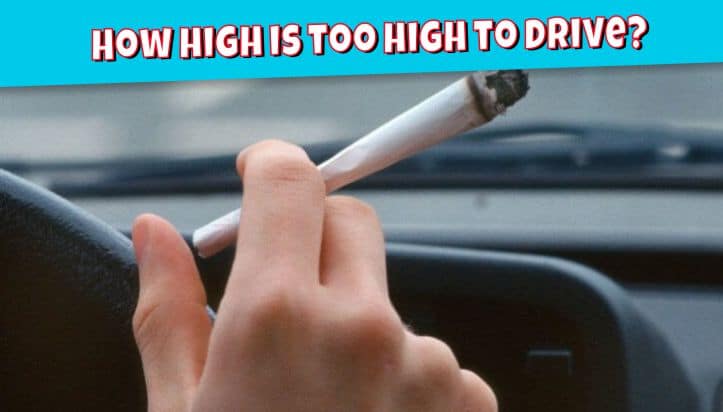You have the munchies and you’re hightailing it to the nearest 7-11 for an epic binge. Then all of a sudden, you’re getting pulled over for a roadside drug test and face drug-impaired driving charges. The police officer suspects you may have smoked a joint before departing. Of course you did, that’s why you’re 7-11 bound right?
But the officer is in a bit of a predicament, because, there’s no reliable and immediate way to know for sure how high you really are or if you are high at all.
The challenge is that having THC (the active ingredient in marijuana that gets you high) in your system may mean that you’re too impaired to drive — or it may not. Unlike alcohol and the breathalyzer, there is no accepted roadside test for marijuana impairment in Canada, well at least not yet.
Currently, police who suspect drug-impaired drivers use a standard sobriety test that includes looking at a driver’s eyes and asking the person to walk and turn and stand on one leg. Suspected drivers can also be examined by a specially trained police officer called a drug Recognition Expert and be given a blood test. But, from a cop’s perspective, the red tape involved to prove someone is high, especially on a small quantity of cannabis, usually turns out to be more work than it’s worth.
Coming soon, a high tech oral device using saliva to detect how high you really are on marijuana while driving.

The RCMP and other Canadian police agencies in collaboration with Public Safety Canada tested two different oral fluid screening devices, which can identify the presence of marijuana quickly.
Much like a breathalyzer test for alcohol impairment, the device is a small and portable machine that police can use to test drivers for impairment at roadside drug tests and random stops by taking a saliva sample. It has been reported that after the saliva test, the results to see how stoned you really are can take about five minutes.
The devices can effectively detect the presence of a drug, but this does not always relate directly to the impairment of an individual. Tonnes of court challenges over the last several decades have successfully upheld that in cases related to alcohol – the strict limit of 80 milligrams per 100 millilitres of blood is a Criminal Code offense. The same cannot be said when it comes to blazing and driving. In terms of both the science and what the courts will have to say, no magic number exists on drug impairment. But, the government had to come up with a number for a limit and it’s going to be somewhere in the 2ng of THC to 5ng ballpark (http://www.gazette.gc.ca) In the coming decade many court cases will shed light on how individual tolerance of the THC affects a persons motor skills and how long cannabis stays in your body.
Canadian Police forces are on the case and will be rolling out the saliva devices along with aggressive RIDE program campaigns early on to ensure that once legalization of cannabis is in place that behavior on the roads does not endanger our public safety. Nothing cringes on a buzz more than an accident!
UPDATE- Canada Approved the First Roadside Saliva Test Device Called the Draeger DrugTest 5000
The Draeger DrugTest 5000 is produced by a German company and the device is already approved in other countries, including the United Kingdom and Germany. A Justice Department spokesperson noted it may be configured differently to meet Canadian standards.
The notice to approve the Draeger device means it was tested in a National Research Council laboratory and passed an evaluation by the Canadian Society of Forensic Science. It’s possible more devices will be approved for use later on.
And that’s not all, Public Safety Canada and the RCMP ran a pilot project last year on oral fluid screening devices and concluded they were “a useful additional tool for Canadian law enforcement.” The Draeger device was not one of the two used in the pilot project.
The saliva-testing device, which is also approved to test for cocaine, provides police with a powerful new tool to detect recent drug use (within approximately the last six hours). A failed test gives police reasonable grounds to bring a driver in for further testing, including a blood test or an examination by a drug recognition expert.
So the question remains – How high is too high to drive, and how can they prove it?
Right now in Canada, that question is very controversial. All of the above complications apply, among others, and the government can’t officially say “how high is too high to drive”. Proving it will be equally challenging and just as controversial, even with the new high tech saliva test devices coming.
Bill C-46 Drug-Impaired Driving
The federal government has released a draft of its planned drug concentration levels but admits the new rules provide no guidance on how much marijuana it would take to push a driver over the legal limit. Canada will only set precise limits when they finalize and pass Bill C-46.
Three new offenses for drug-impaired driving:
The government has drafted legislation (Bill C-46) that would create three new offenses for drugged driving including a summary offense for people with THC in their system but not enough for them to be impaired.
The government explains that the summary offense is not directly linked to impairment but rather is “based on a precautionary or a crime prevention approach.”
- Drivers who have a blood drug concentration of more than two nanograms of THC (per milliliter of blood) but less than five nanograms could be found guilty of drugged driving under the proposed summary offense, which has a maximum fine of $1,000.
- Drivers caught with more than five nanograms of THC in their blood would be guilty of impaired driving, while drivers with both alcohol and THC in their system would be considered impaired if they have more than 50 milligrams of alcohol (per 100 milliliters of blood) and greater than 2.5 nanograms of THC in their blood.
- The government said the other two proposed offenses would be similar to the offenses for drunk driving. Drivers with more than five nanograms of THC in their blood would be punished with a mandatory fine of $1,000 for a first offense, 30 days imprisonment for a second offense and 120 days for a third offense.
Source: CTV News
Bottom line, it’s best to have a mindset of avoiding getting behind the wheel — just like it is now with alcohol – when it comes to getting high on cannabis. It’s going to take time for all the potholes in Bill C-46 to be paved smooth and until then, it could have an unfair impact on drivers who are users of marijuana.


COMMENTS